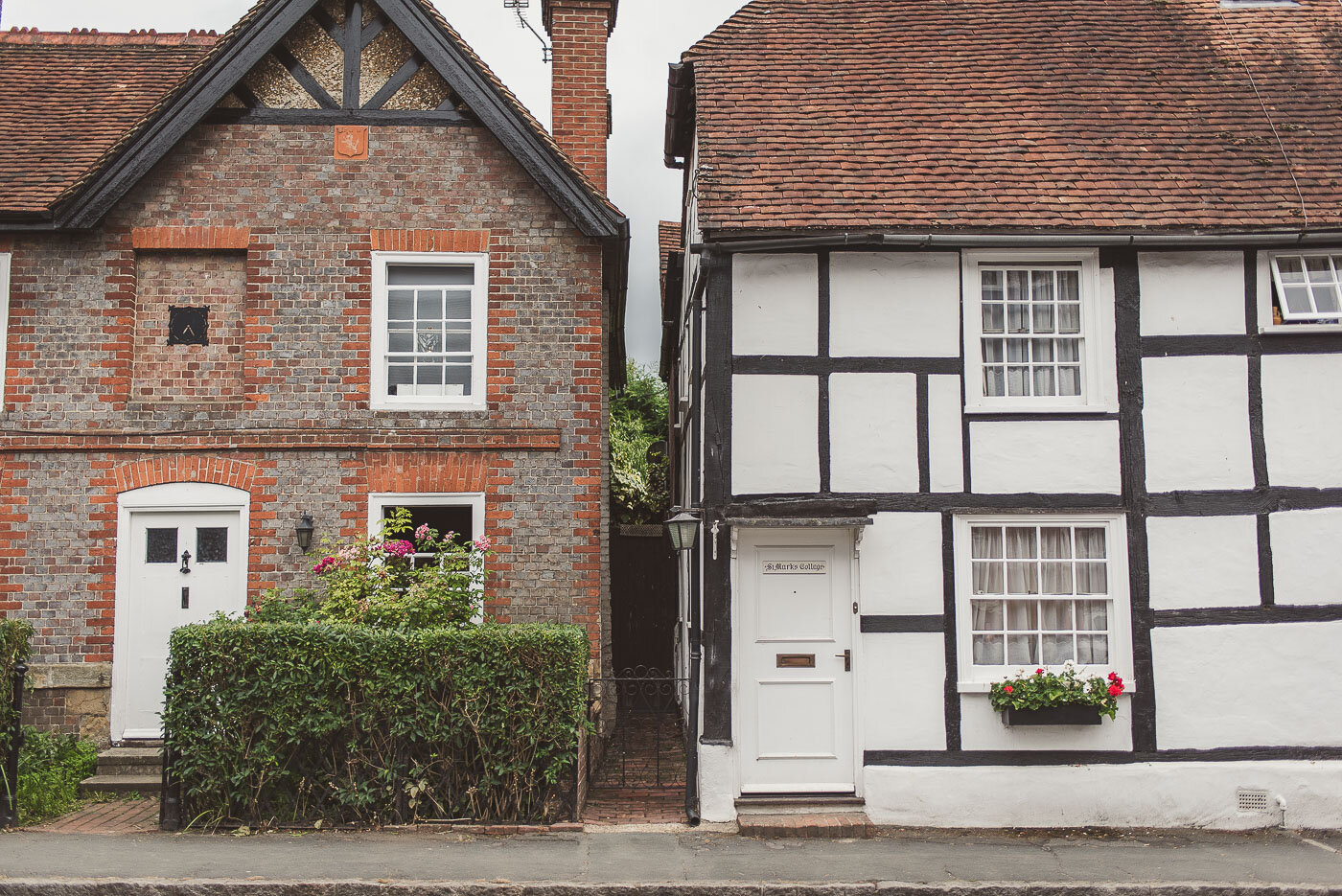Permitted Developments: The Ultimate Guide
We created a post that answers the question “do I need planning permission?” so we’ll leave you to read that first, but some big old questions remain around Permitted Developments. So, ever striving to make your home renovation as easy as possible, we’re here to answer your questions and give you the low down all you need to know about Permitted Developments, without the mumbo jumbo.
In case you didn't know, regulations around Permitted Developments changed in May 2019 so, even if you know your stuff, best read on to make sure you’re fully updated.
Let’s jump straight in.
1. What is a Permitted Development?
If you’ve read our guide on planning permission, you’ll know that there are some types of home renovation and improvements that don’t require you to get planning permission. Instead of gaining permission from a local authority, you have certain rights to do work to a property you own. These are ‘permitted developments’. However, rights can differ between houses, flats, maisonettes, commercial properties and other buildings so the same rules don’t apply to all cases.
In short, there’s plenty you can do to your home without having to submit a long winded proposal, saving yourself time and money. But be careful because within the list of permitted work, there are a few grey areas and the work usually needs to meet certain guidelines to make it in line with regulations, which we’ll discuss below.
2. What’s the difference between Permitted Development and Planning Permission?
Permitted Developments are anything that falls into the categories below (see the answer to question 5) or that is deemed to not require prior permission by your LPA (Local Planning Authority). Any projects outside these will require you to attain Planning Permission before commencing the work. The lines between the two can be quite fine so it’s advisable to always work with your LPA during any project as they'll let you know what you need to file for permission for or not.
3. Do I automatically have Permitted Development Rights on a property I own?
This depends on the type of property you’re planning to work on. Most houses, by default, have Permitted Development Rights already granted by the government. Flats and maisonettes on the other hand will need to planning permission. There are also certain areas in the country where these rules do not apply such as conservation areas, areas within National Parks and World Heritage sites. This guide is covering typical permitted developments for residential houses in a typical residential area in the UK.
4. Do I need to apply for a permitted development?
Provided your project is clearly covered by one of the permitted development categories (outlined in the next question), it is not a listed building, nor does it sit within a protected area, and you have not been issued an ‘article 4’ (more info below) – you can assume you don’t need to apply for planning permission. However it is due diligence to get a document called a Lawful Development Certificate to prove that the work is covered by a right, which can be acquired by submitting an application through the Planning Portal, as you would with Planning Permission. This document can be super handy as proof when it comes to selling your house. As always, it’s best to check with your LPA - usually it’s just a quick phone call or email - to ascertain whether you’re doing everything ‘by the book’.
5. What can I do to a property under Permitted Developments Rights?
OK here is where you need to be careful. If you’re looking to renovate your property or make home improvements without going down the Planning Permission route then there’s lots of great things you can do that doesn't require submitting planning applications. Below is the work you can do on a residential house falling under Permitted Development Rights, including:
A small extension
A double storey extension
Some demolition work
Adding an outbuilding
Interior changes
Change of use within the same ‘use class’ (see below)
A loft conversion including dormer windows and roof lights (with exceptions)
Some porches, balconies and verandas
Installation of solar panels and satellite dishes
A new driveway
Installing an electric vehicle charging outlet
Each of these categories come with rules and exceptions, for example extensions can only be of a certain size and driveways are restricted in the type of surface. If any of these situations might apply to the project you have in mind, click through to the rules so you’re fully informed.
6. How big can an extension be under Permitted Development Rights?
Luckily, the limits for rear extensions have been permanently increased under the changes earlier this year. This means you have more scope to improve your house without the need for Planning Permission. However, extensions are subject to something called the Neighbour Consultation Scheme so you’ll need to get approval if you’re planning a larger extension. Under the new limits, you can make some great changes. To give you an idea, here are some of the rules:
Your extension can cover no more than half of the spare space that was there to start with
If you’re building upwards, make sure you don’t go any higher than the highest part of the roof
Single-storey rear extensions must not extend beyond the rear wall of the original house by more than 4m if a detached house; or more than 3m for any other house.
Two storey rear extensions can’t go further than 7 metres from the boundary at the back
The maximum height of the eaves must be within 2 metres of the 3 metre boundary
any roof pitch of an extension more than one storey must be the same as the existing house
Single storey side extensions can’t go beyond 4 metres high and half the width of the existing house
You can’t build in front of the wall deemed to be the front of the house
You must use materials that look similar to what’s on the existing house
Many other more specific rules apply so have a thorough go over them to make sure your plans are within the rules.
7. What are the rules for outbuildings under Permitted Developments?
If you’re looking at sprucing up the external area of your home with say, a she-shed, home office or contained space at the end of a garden, and don’t have the right space for adding an extension, there are great options under Permitted Developments. This means that there’s huge scope for home improvements even on a more major scale without having to go through the Planning Permission process. As with adding an extension, there are some tricky rules that apply to outbuildings so make sure your work falls within them. Some of these include:
An outbuilding must be within 2 metres of the boundary and can’t go above 2.5 metres
Single storey outbuildings must have a maximum eaves height of 2.5 metres and overall height of 4 metres for dual pitched or 3 metres for any other roofs
They must not have verandas or balconies
No more than half the original spare land can be covered
You must not build in front of the wall deemed to be the front of the house
8. What are ‘use classes’?
Changing what you use a property for is usually permitted so long as you’re switching within the accepted ‘use classes’. There are load of different combinations, but common examples include changing from a restaurant to a shop, a shop to a business, a professional or financial service to a restaurant of a certain size or a shop to a residential house of a certain size. Check this useful table to see where you stand, but bear in mind that some exceptions apply and not all ‘uses’ fit neatly into these categories. Whilst change of use may not need Planning Permission, if you’re looking to work on the external parts of the building or give it a major spruce up, you might need to get permission so remember these two types of works are separate.
9. Are Permitted Development Rights the same everywhere?
In some areas of the country, Permitted Developments can be quite different. It’s important to take the time to check whether your property falls into one of the exception areas. In particular:
Conservation areas (see Article 4 below)
National Parks
AONBs (Areas of Outstanding National Beauty)
World Heritage Sites
Suffolk or Norfolk Broads
There are some areas outside the ones listed above where your LPA might require permission before the project due to the character or importance of the area. Read more about being issued an Article 4 below.
10. What is an ‘Article 4’?
In some cases, an LPA can withdraw some of your Permitted Development Rights by issuing something called an Article 4. This might be because an area of beauty or character could be effected by buildings works. This likely would have been flagged to you during your conveyancing when you buy/bought your property. If it happens, you’ll need to submit a planning application for your project. It’s a positive step towards maintaining cherished areas of the country so while it is frustrating, it’s essential in a lot of areas needing protection.
11. What if I want to work on a listed building?
Beautiful as they are, planning a project for a listed property or building may make your work a little more tricky. The same rules as regular houses do not apply for listed buildings and any projects will need Listed Building Consent as well as any Planning Permission necessary for the job. These measures are in place to make sure the heritage buildings of the country retain their glory so it’s a good thing, really. I know it won’t feel that way.
12. If I’m unsure whether I’ve got Permitted Development Rights, where do I start?
Again, as with Planning Permission, head to the Planning Portal to use the super handy interactive page to start yourself in the right direction for figuring out if you need to gain permission or not. Get in touch with your Local Planning Authority as they’re there to give a helping hand through your renovation journey. Starting the discussion with them can save you time researching and hopefully prevent any unexpected renovation costs.
Please note: as with Planning Permission, we have written this information to the best of our knowledge, in line with the recent changes from earlier this year. The Planning Portal advises you to work with your Local Planning Authority and run your proposal past them before proceeding with work. We always recommend working with your local authority to be on the safe side and avoid any unexpected costs, fines or other issues.
Next up ›› How to budget for your renovation
Thanks for reading guys! We hope this helped you.






